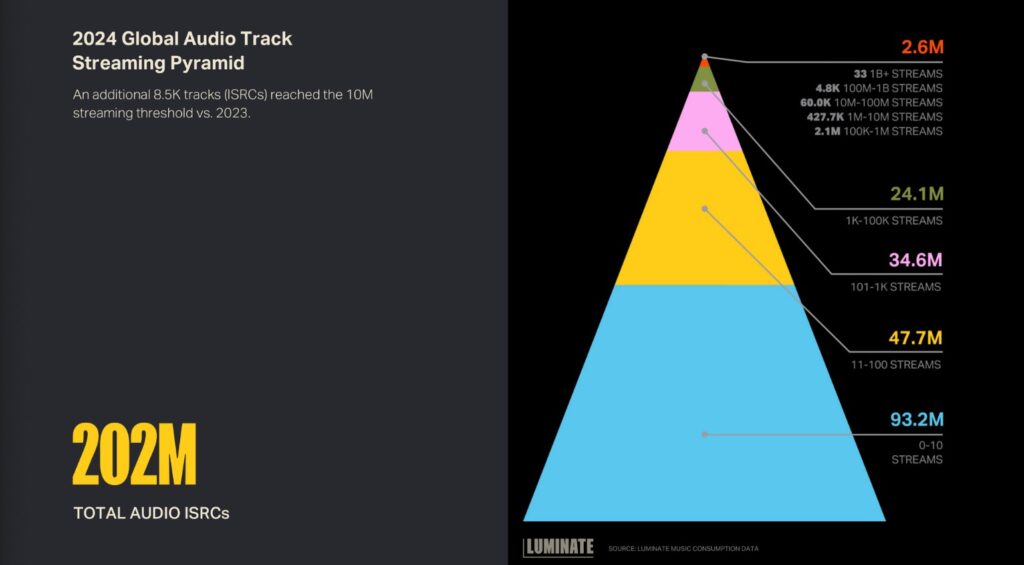The music streaming industry continues to face a staggering reality: millions of songs are uploaded every year, but most remain unheard. According to Luminate’s 2024 report, out of the 202 million tracks available on platforms like Spotify, a shocking 50 million songs had no listeners, and 175 million failed to reach 1,000 streams annually.
With tools like AI-driven production software and direct upload platforms making music creation more accessible, nearly 99,000 new tracks are uploaded daily. Yet, this abundance highlights a harsh truth: 87% of all songs on streaming platforms receive fewer than 1,000 plays per year. Meanwhile, only 5.31% of Spotify artists manage to attract more than 1,000 monthly listeners.


The Debate: What Happens to Unheard Tracks?
This oversaturation has sparked conversations in the music industry. Spotify introduced a controversial policy in early 2024, removing tracks played fewer than 1,000 times from royalty payouts. Critics argue that, while these songs may not garner individual attention, they collectively account for a significant share of total streams.
For artists, the reality is sobering. The promise of global distribution often leads to disappointment when their music struggles to reach an audience. For platforms like Spotify, the challenge lies in balancing diversity and discoverability within an overwhelming sea of content.
The Future of Streaming
As listener attention remains finite, streaming platforms must innovate to spotlight quality and relevance. The music industry must address this growing imbalance between supply and demand to ensure sustainability. In a world where music is easier than ever to produce, the focus must shift from sheer volume to fostering meaningful connections between artists and listeners.




